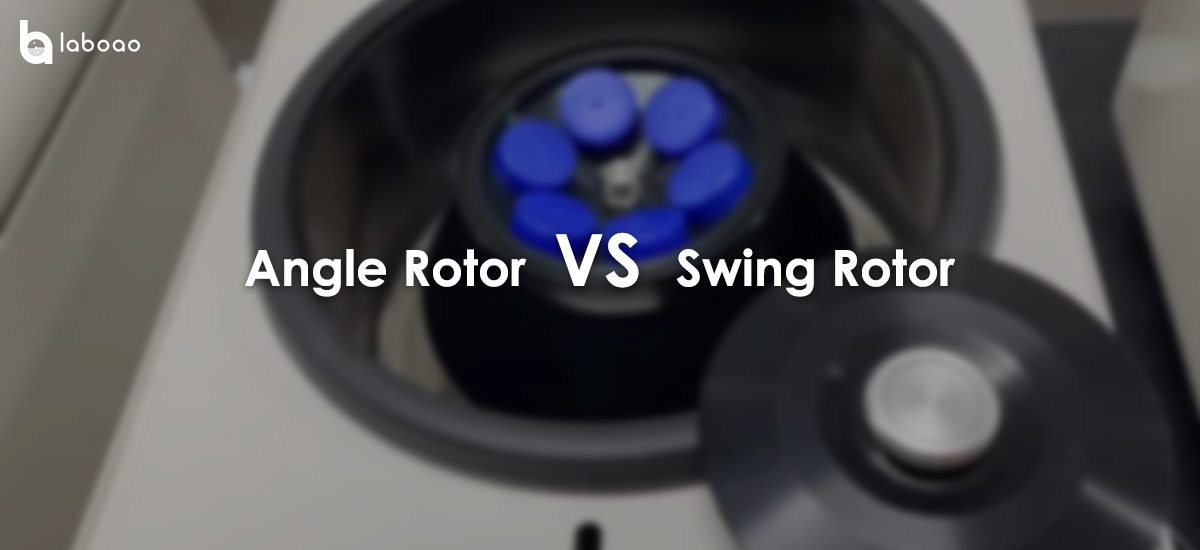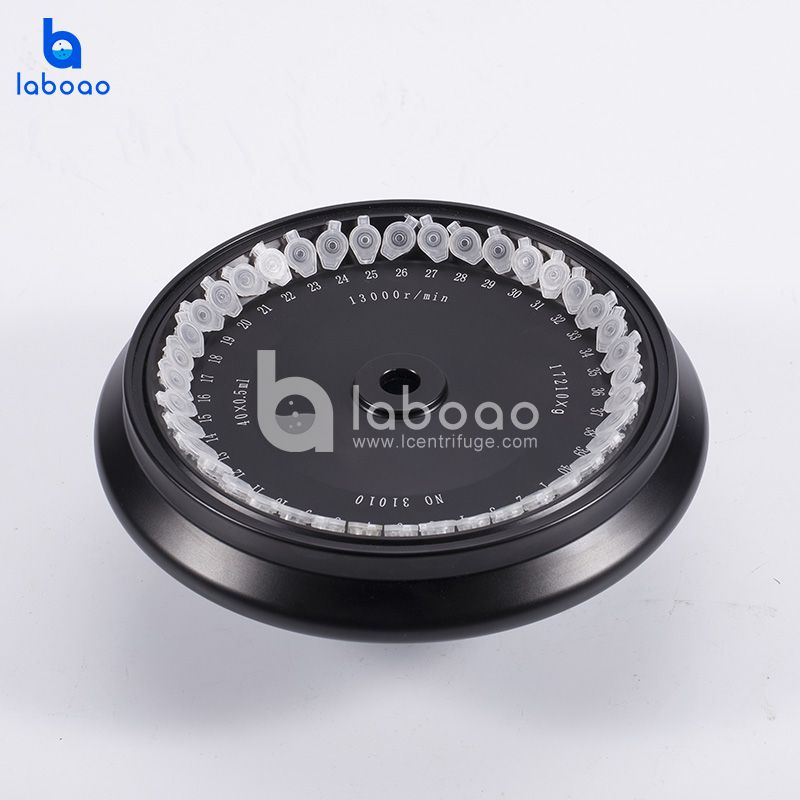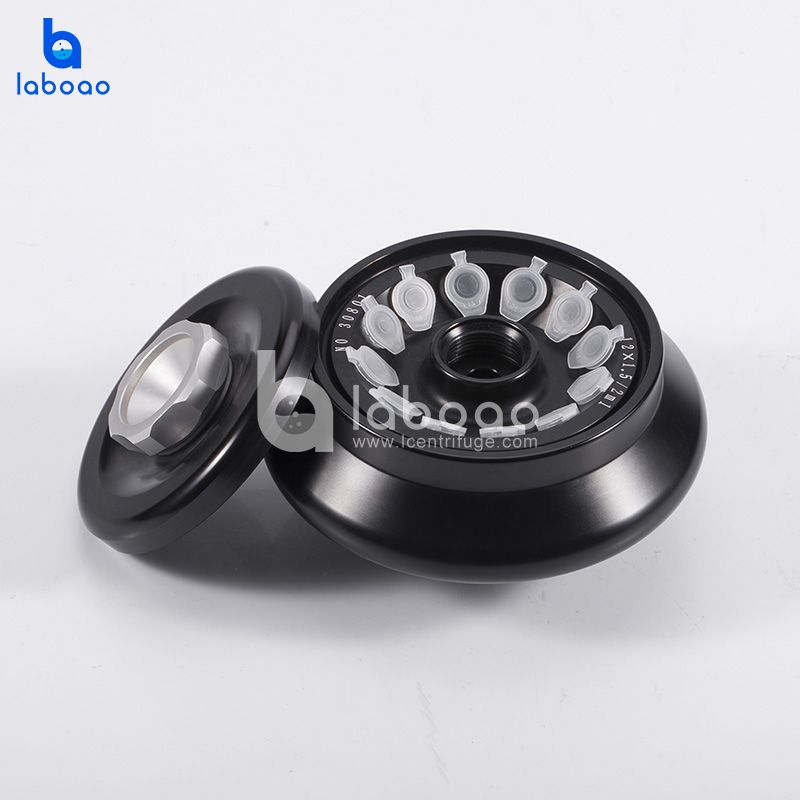
I. Description and use scenarios of angle rotors.
A fixed-angle rotor is a sample tube centrifuged at a fixed angle, with the sample usually deposited on the wall of the tube. A fixed-angle rotor is subjected to less metal pressure, so it allows for higher speeds and relative centrifugal forces, thus reducing centrifugation times.
Which scenarios require the use of fixed angle rotors when using laboratory centrifuges?
1. A higher relative centrifugal force is required to completely separate the sample.
2. Very compact sediments need to be obtained.
3. Small sample volumes per centrifugation.
Effectiveness of fixed angle rotor sample separation in laboratory centrifuges.
When centrifuging samples, most fixed angle rotor holes form the most compact precipitate at a 45° angle. A fixed angle rotor angle of less than 45° will result in a more dispersed precipitation zone for the sample and the precipitate may be resuspended when the supernatant is transferred, affecting the separation effect.
There are limitations to using a fixed-angle rotor: the centrifugation throughput is limited and the sample volume per centrifugation is called small, with a maximum throughput of 6x100 ml for benchtop centrifuges and 6x1000 ml for floor standing high-speed centrifuges.
II. Swing rotor description and use scenarios.
The horizontal rotor basket can be tilted horizontally by 90°, allowing the sample to settle directly in the middle of the tube bottom. The advantage of the horizontal head is that a wide range of adapter sizes is available, allowing for high capacity and flexibility.
Laboratory centrifuges with horizontal rotor for sample separation.
When centrifuging with a horizontal rotor, the sample settles in the middle of the tube bottom. It has the advantage that the sample to be separated is at a low concentration, allowing the sample to be deposited as densely as possible on the bottom of the tube and then resuspended with a small volume of buffer, which can increase the sample concentration as much as possible.
In addition, the gradient centrifugation method also requires the use of a horizontal rotor in order to create multiple horizontal gradient layers and also to ensure that the individual horizontal gradients are maintained even at the end of the centrifugation.
Which scenarios require the use of horizontal rotors when using laboratory centrifuges?
1. Large sample volumes.
2. Gradient centrifugation is required.
3、Samples need to be centrifuged to the middle of the bottom of the test tube.
4. Centrifugation of various sizes of tubes/bottles and working plates is required.
Limitations of using a horizontal rotor head: displacement of the horizontal rotor basket during centrifugation can cause higher metal pressure, which can reduce the maximum centrifugal force and even prolong the centrifugation time.
To summarize, the difference between angle rotor and swing rotor is as follows.
The angle rotor is a rotor in which the centrifugal vessel is at a fixed angle to the rotating axis and the sample concentrates the sedimentation at the bottom of the centrifuge tube and the side wall near the bottom. The angle between the central axis of the centrifuge tube cavity and the rotating axis is between 20 and 40 degrees, the greater the angle the stronger the sedimentation and the better the separation effect. The advantages of the angular rotor are low center of gravity, low resistance, stable operation, the ability to separate at high speed and a large capacity, the centrifuge tube in the angular rotor is able to maintain a fixed angle of centrifugation, allowing the use of higher rotational speeds, centrifugation after the sedimentation is located at the bottom of the tube slope. Angle rotor with a lid helps to reduce friction, reduce noise and prevent accidents, so use the angle rotor must be covered with a lid, if not covered, the centrifugal cavity will generate a lot of vortex resistance and frictional heating, which adds an extra burden to the centrifuge motor and chiller, affecting the service life of the centrifuge.
The swing rotor is composed of 4 or 6 hanging free moving baskets. When the rotor is stationary, the basket hangs vertically, and when the rotor speed reaches 200 to 800 revolutions per minute, the basket swings to a horizontal position, so the horizontal rotor is most suitable for density gradient zone centrifugation. The horizontal rotor can achieve large capacity separation, the gradient material can be placed in the centrifuge tube to maintain vertical, centrifugation of the separated sample belt perpendicular to the longitudinal axis of the centrifuge tube, to facilitate the removal from the centrifuge tube in layers. However, the horizontal rotor separation center of gravity is higher, the resistance is larger, not suitable for high-speed separation, the particle settling distance is long, and the time required for centrifugation is also long. When the rotor speed exceeds 600 rpm, the centrifuge tube reaches a horizontal position, the sample settles in the direction of axial movement along the centrifuge tube, and finally settles at the bottom of the tube, which is easy to collect.
When choosing a centrifuge be sure to choose the appropriate centrifuge rotor according to your needs.



